For new parents and growing families, selecting a car that accommodates a rear-facing car seat without compromising front-row comfort is more than a convenience—it’s a necessity.
Rear-facing seats, which are crucial for the safety of infants and toddlers, tend to be bulky and require generous rear legroom.
Unfortunately, in many vehicles, installing one means sacrificing the comfort of the front passenger or even the driver by pushing their seats uncomfortably forward.
However, not all vehicles demand this trade-off. Some are thoughtfully designed with rear-seat space that accommodates rear-facing car seats while allowing the front seats to remain in their natural, fully usable positions.
These vehicles consider not just passenger legroom but also the geometry and contours of the cabin, ensuring enough clearance for safe and proper car seat installation.
This article explores ten cars—spanning SUVs, sedans, and crossovers—that provide ample room for rear-facing car seats without intruding on the front-row space.
These models stand out not only for their generous dimensions but also for their family-friendly features such as LATCH anchor accessibility, flat seatbacks for secure installation, and ease of entry and exit for both children and caregivers.
Whether you’re a first-time parent or upgrading to a more spacious family vehicle, this guide will help you identify models where safety and space coexist harmoniously.
No more squeezing into the dashboard or sacrificing adult comfort for child safety—these cars offer both. From mainstream brands to luxury automakers, you’ll find vehicles that make rear-facing car seat installation simple, secure, and space-efficient.
Let’s begin with a vehicle that has long been celebrated for its family-first design: the Honda CR-V.
Also Read: 10 Cars With Seat Material That Holds Up Against Pet Hair
1. Honda CR-V
The Honda CR-V has built its reputation on reliability, efficiency, and family-friendliness, and its latest iterations continue that legacy with interior dimensions that are especially accommodating for rear-facing car seats.
One of the key strengths of the CR-V is its rear legroom—approximately 41 inches—among the best in the compact SUV segment.
This generous space allows for most rear-facing infant and convertible car seats to fit comfortably without requiring the front passenger seat to move forward at all.
Whether you’re using a high-backed infant carrier or a larger convertible model, the CR-V’s rear bench offers the depth and width to install the seat securely while preserving front-row comfort.
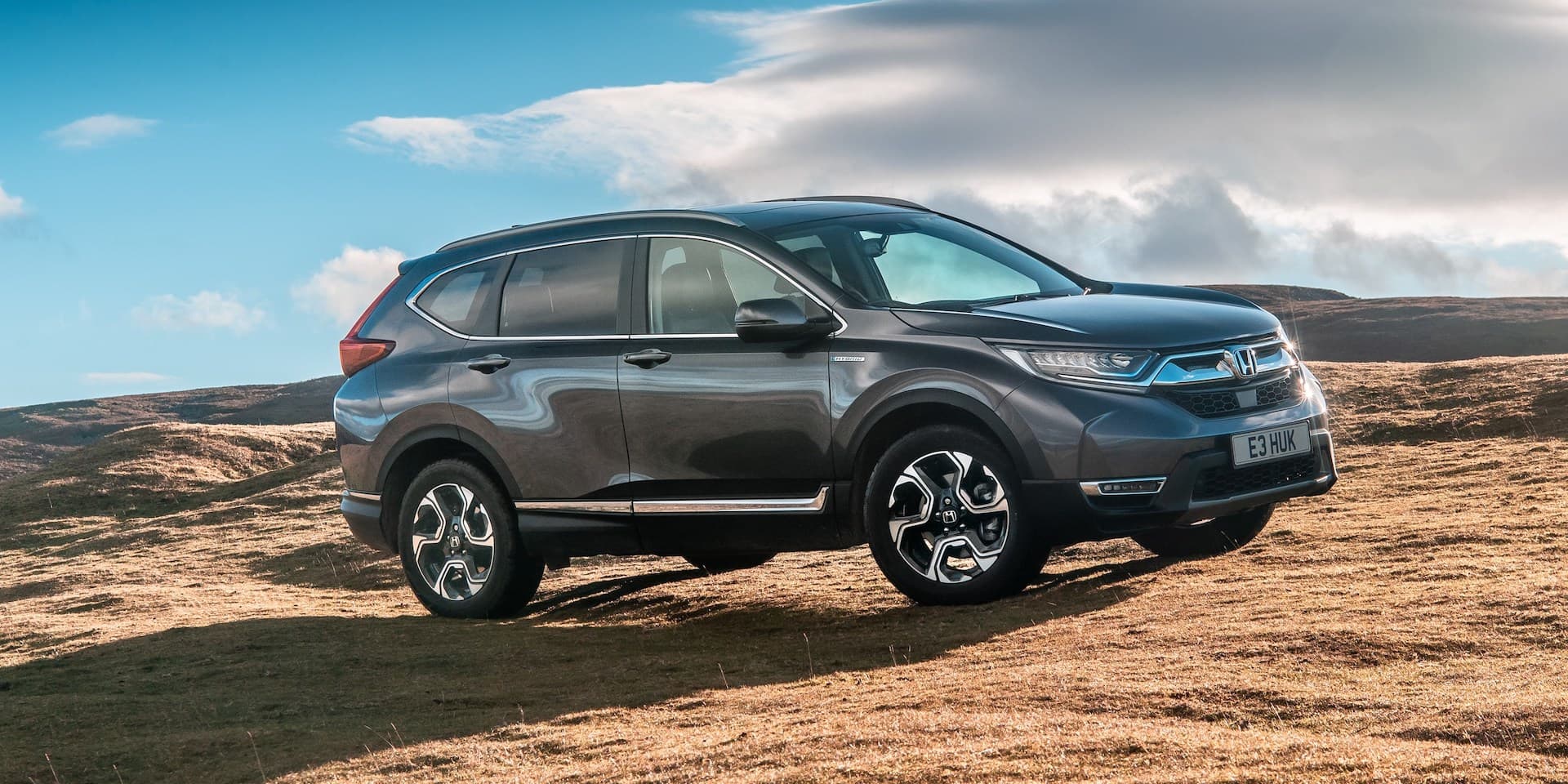
Parents over six feet tall can still ride in the front passenger seat with full leg extension, even with a rear-facing seat directly behind them.
Honda also makes installation straightforward with easily accessible LATCH anchors and clearly marked lower tethers.
The seatback is slightly reclined, which aids in achieving the correct angle for rear-facing car seats without requiring rolled towels or aftermarket wedges.
There’s also enough door clearance and roof height to make maneuvering the seat and buckling your child less of a back-straining task.
Practicality aside, the CR-V also includes family-friendly features like wide rear door openings, rear air vents, and excellent rear visibility—all things that make traveling with young children easier. Some trims offer features such as remote start and power tailgate, enhancing convenience for parents juggling kids, diaper bags, and groceries.
For those who want the versatility of an SUV without upsizing to a full-size model, the CR-V delivers an ideal blend of space, comfort, and efficiency. It’s a smart choice for families that need to accommodate rear-facing car seats but don’t want to give up front-seat usability.
2. Toyota RAV4
The Toyota RAV4 remains one of the best-selling SUVs in North America, and for good reason.
Beyond its reputation for reliability and strong resale value, it also shines as a family vehicle with enough rear seat space to fit a rear-facing car seat without pushing the front row forward—a crucial feature for families with infants or toddlers.
With over 37 inches of rear legroom, the RAV4 doesn’t boast the segment’s most generous measurements on paper. However, Toyota’s smart seat design and cabin layout make the space incredibly usable.
The front seats are sculpted in a way that allows rear-facing car seats—especially compact convertible ones—to nestle in nicely without interfering with the front passenger’s legroom.
Parents will appreciate the ease of installing seats in the RAV4, thanks to its accessible LATCH system and tether anchors located high on the seatbacks.
The cushions are flat and firm, allowing for a secure and level fit, which is important for ensuring the seat remains at the proper angle for safe travel. Many car seat models, including Britax and Graco convertibles, fit rear-facing behind the passenger seat with the front seat in its default position.
The RAV4’s rear door opening is wide, making it easier to place a rear-facing seat or load a child into it. The roofline offers ample headroom, and the seat height is at an ideal level—not too low and not too high—so parents don’t have to stoop or reach uncomfortably.
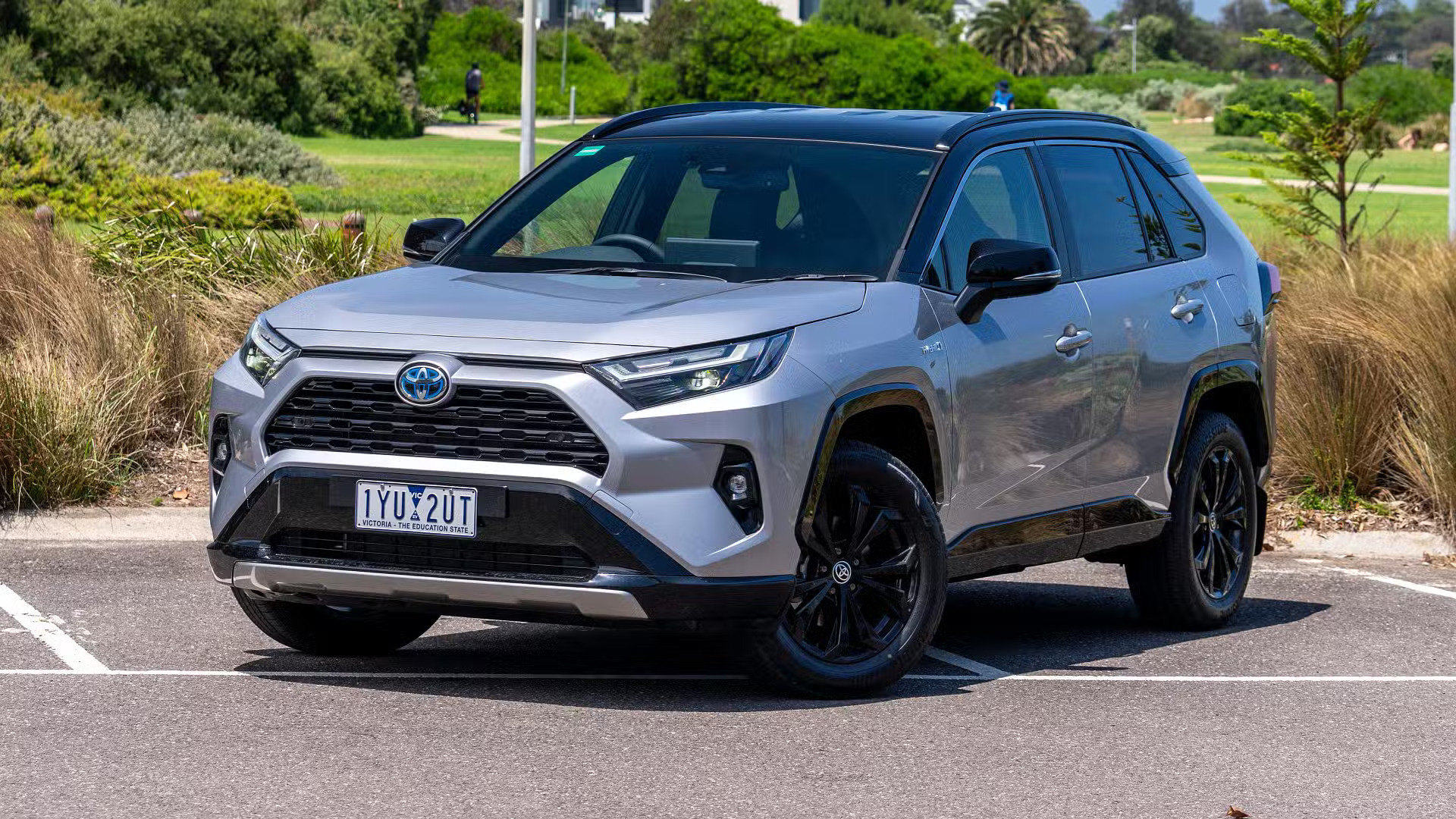
Added bonuses for families include rear air vents, multiple USB charging ports in the back row, and child safety locks on the rear doors.
For tech-savvy parents, Toyota’s standard infotainment system includes smartphone integration, which can be useful for navigation and audio while managing family errands.
Overall, the RAV4 manages to deliver real-world usability that goes beyond the numbers. It proves that even in a moderately sized SUV, thoughtful engineering can make a big difference for families needing to install rear-facing car seats without sacrificing front-row comfort.
3. Subaru Outback
The Subaru Outback stands out as a practical and versatile vehicle, merging the benefits of a wagon and an SUV.
It’s especially well-suited for families, not just because of its all-wheel-drive capability and reputation for safety, but also because it can fit a rear-facing car seat without requiring front-row adjustments—a feat that many competitors can’t claim.
The Outback boasts an impressive 39.5 inches of rear legroom, providing enough clearance for even larger rear-facing convertible seats.
Parents will find that most car seats fit behind the front passenger seat without the need to slide it forward or sacrifice comfort. Taller adults can sit in the front seat with full leg extension even when a child seat is installed directly behind them.
Subaru’s cabin layout is particularly family-friendly. The rear seatbacks are upright and flat, providing a supportive and secure base for car seat installation.
The Outback also comes equipped with a clearly labeled LATCH system and tether anchors on the rear shelf—easily accessible and straightforward to use, even for first-time parents.

One key advantage of the Outback is its slightly lower step-in height compared to traditional SUVs. This makes it easier for parents to lift and install a car seat or buckle a child into position without excessive bending or reaching.
The wide-opening rear doors also offer superior access, a helpful detail when you’re dealing with a wiggling toddler or a sleeping infant in a heavy carrier.
On the road, the Outback’s comfortable ride and smooth handling make it less jarring for young passengers.
And because it comes standard with Subaru’s EyeSight suite of safety features—including adaptive cruise control and lane-keeping assist—parents can drive with greater confidence.
The Subaru Outback is a solid all-around performer for families who want rugged practicality without giving up rear seat usability. It offers one of the most accommodating environments for rear-facing car seats in the midsize segment.
4. Volkswagen Atlas
The Volkswagen Atlas is one of the most spacious three-row SUVs on the market and has quickly become a go-to choice for families who need maximum interior room.
One of its standout features is its ability to accommodate rear-facing car seats in the second row without encroaching on front-row space—a crucial feature for taller drivers and passengers.
With a remarkable 37.6 inches of second-row legroom and an impressively wide cabin, the Atlas allows for large convertible car seats to be installed rear-facing with no need to slide the front seats forward.
This is particularly valuable for families who already own full-size car seats or who are planning to use the same vehicle as children grow into rear-facing convertibles with extended weight limits.
The second-row bench or captain’s chairs (available depending on trim) provide flat, supportive bases that simplify the installation process.
Volkswagen makes it easy to locate and use the LATCH anchors, and the tether anchors are positioned at the top of the seatbacks for straightforward access. The door openings are tall and wide, which allows for smooth entry when lifting in a car seat or placing a child inside.
One of the biggest advantages of the Atlas is that even with rear-facing seats installed in the second row, access to the third row remains practical. Thanks to the Atlas’s unique tilt-and-slide seat mechanism, you can enter the third row without removing a car seat—a rare and appreciated feature.

In addition to space, the Atlas includes many family-oriented features such as tri-zone climate control, sunshades in the rear doors, and multiple USB ports across all rows. Its quiet ride and smooth handling also make it a relaxing environment for both driver and young passengers.
For families who often travel with multiple children or need flexibility between passengers and cargo, the Atlas delivers top-tier rear seat usability. It combines cavernous interior space with thoughtful design, making rear-facing car seat installation simple and frustration-free.
5. Ford Edge
The Ford Edge is a midsize SUV that strikes an appealing balance between space, performance, and family practicality.
It’s especially notable for offering enough rear seat legroom to accommodate a rear-facing car seat without forcing the front passenger or driver to scoot forward—something not all midsize crossovers can manage.
Rear legroom in the Edge measures a generous 40.6 inches. This means even taller front-seat occupants can ride comfortably with a full-sized rear-facing convertible seat installed behind them. Parents of infants and toddlers will appreciate the ability to use bulkier, extended-use car seats without compromising front-seat comfort.
The Edge’s rear seat bench is firm and relatively flat, which helps ensure a solid and level base for car seats. Ford has also made it easy to access the LATCH system, with lower anchors that are clearly marked and don’t require digging through upholstery.
The seatbacks are upright and sturdy, providing ideal support for securing the car seat without needing additional angle adjusters.
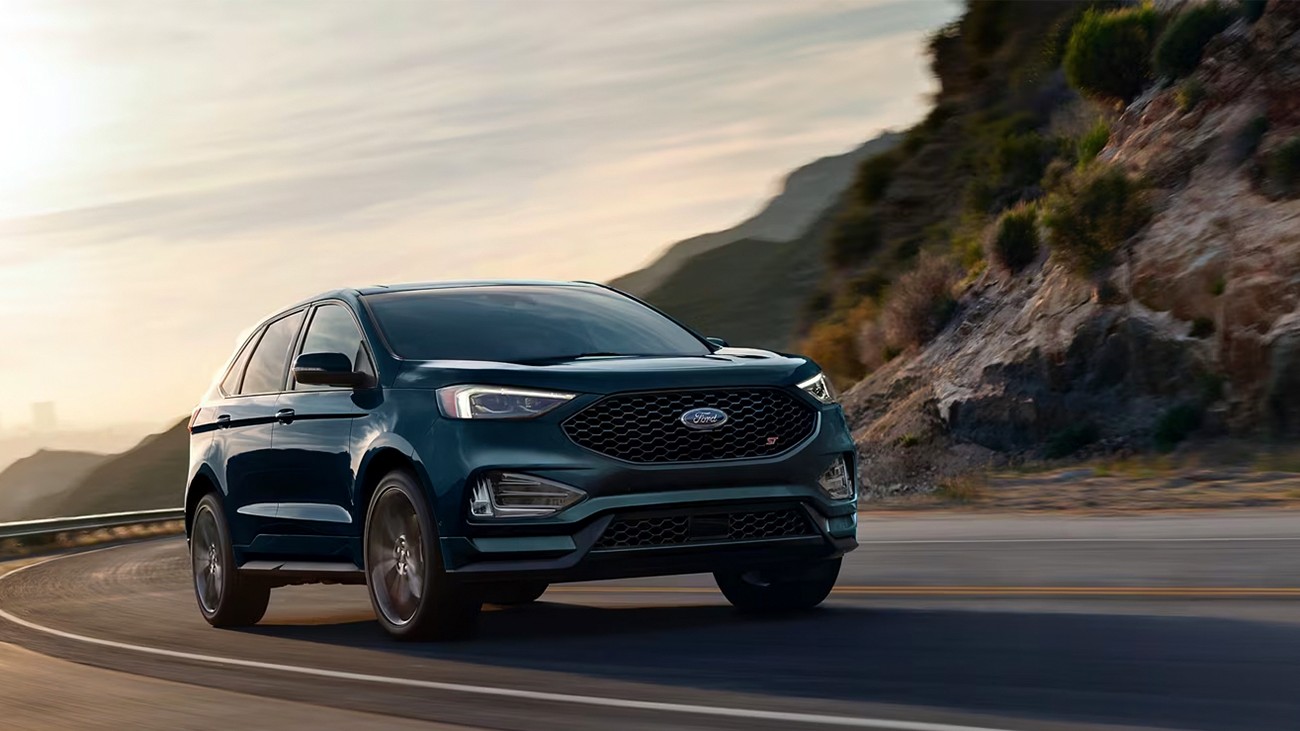
In terms of loading ease, the Edge performs well. The doors swing wide, and the seat height is just right—high enough to minimize bending but not so high that lifting becomes a strain. The rear cabin area feels open and well-ventilated, thanks in part to large windows and available panoramic sunroof, which adds a sense of space that kids tend to enjoy.
Another benefit for parents is the Edge’s quiet cabin and smooth ride quality, which help infants and toddlers stay asleep during longer drives. Some trims even offer heated rear seats and dual USB ports in the back row, allowing for comfort and connectivity as children grow.
In a segment where many vehicles struggle to balance passenger comfort and car seat fitment, the Ford Edge succeeds.
It provides all the space needed for rear-facing car seats to fit without encroaching on front passengers—a crucial asset for growing families who value both safety and comfort.
6. Kia Telluride
The Kia Telluride has rapidly become one of the most sought-after family SUVs thanks to its combination of premium features, spacious cabin, and attractive pricing.
One of its most valuable assets for families is its expansive second-row seating area, which comfortably fits rear-facing car seats without compromising the front row’s legroom.
The Telluride offers an impressive 42.4 inches of legroom in the second row—among the best in its class. This space allows parents to install rear-facing car seats of virtually any size, from infant carriers to extended-use convertible seats, while keeping the front seats in their standard, comfortable positions.
Front-seat passengers well over six feet tall can ride without needing to scoot forward to accommodate a child seat behind them.
Installation is also straightforward, thanks to Kia’s clearly marked and easily accessible LATCH anchors. Tether anchors are located on the seatbacks and are easy to reach.
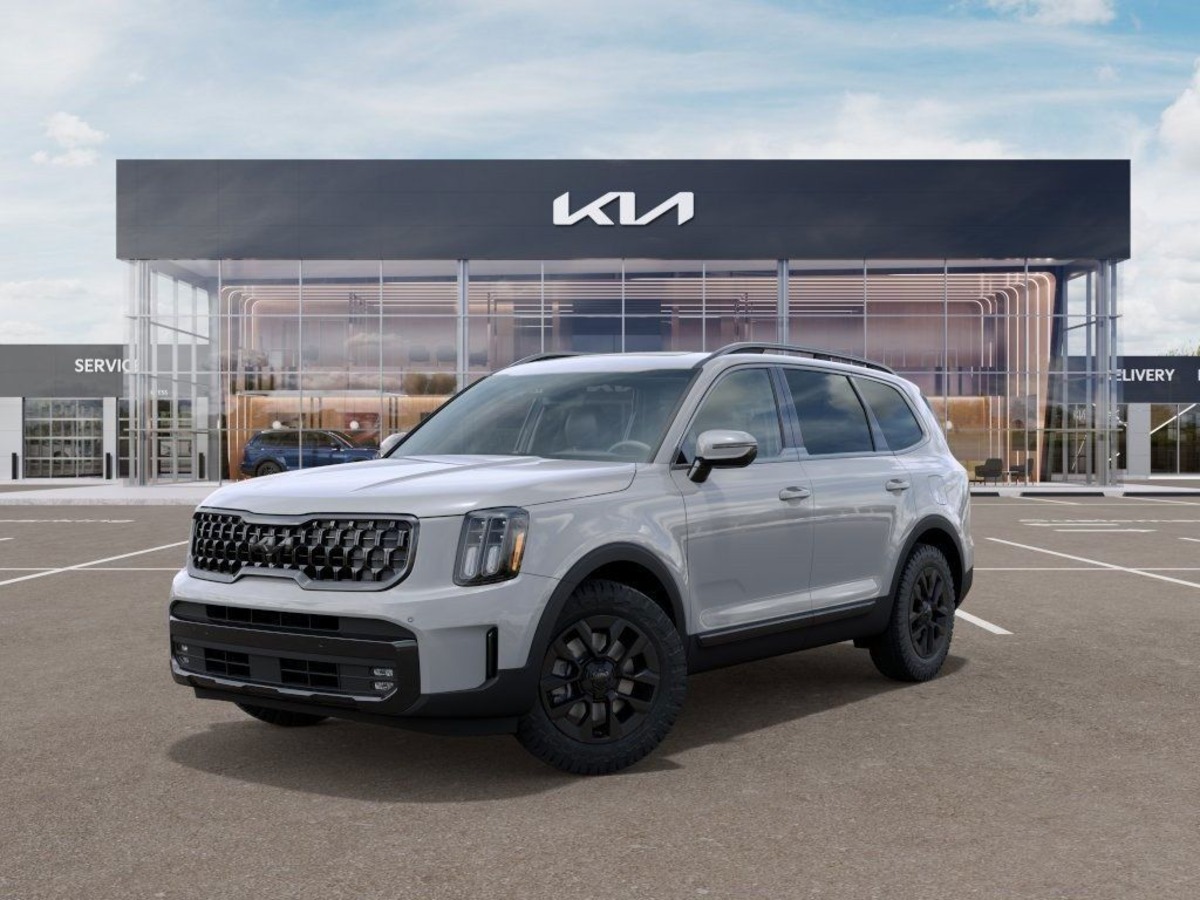
The Telluride’s seats are wide and flat, providing a sturdy base for secure car seat installation, and the seatbacks allow proper angle alignment for rear-facing models.
Families also benefit from the Telluride’s flexibility. Whether you opt for the bench seat or captain’s chairs in the second row, both configurations support easy car seat installation.
The captain’s chairs are particularly helpful for parents who prefer easier access to the third row without removing a car seat.
Adding to the Telluride’s family appeal are thoughtful extras like rear window sunshades, USB ports in all rows, and rear climate controls.
The large rear doors swing open wide, and the step-in height is optimized for easy child loading. Additionally, higher trims offer ventilated rear seats and a quiet cabin, enhancing long-distance comfort for kids and adults alike.
In a segment full of options, the Telluride stands out not only for its looks and value but also for its real-world family usability. If you’re looking for an SUV that handles rear-facing car seats effortlessly without affecting front passenger comfort, the Telluride checks all the right boxes.
7. Honda Pilot
The Honda Pilot has long been a favorite among families, and its latest versions continue to impress with one of the roomiest and most flexible interiors in the midsize SUV class.
Specifically, the Pilot’s second-row seating area is designed with families in mind and easily accommodates rear-facing car seats without pushing the front seats uncomfortably forward.
Boasting 40.8 inches of second-row legroom, the Pilot provides ample space for full-size rear-facing convertible seats. Whether you install a seat behind the driver or passenger, there’s more than enough clearance to maintain front seat usability for taller adults.
This makes it ideal for families with more than one young child or those transitioning between different stages of car seat use.
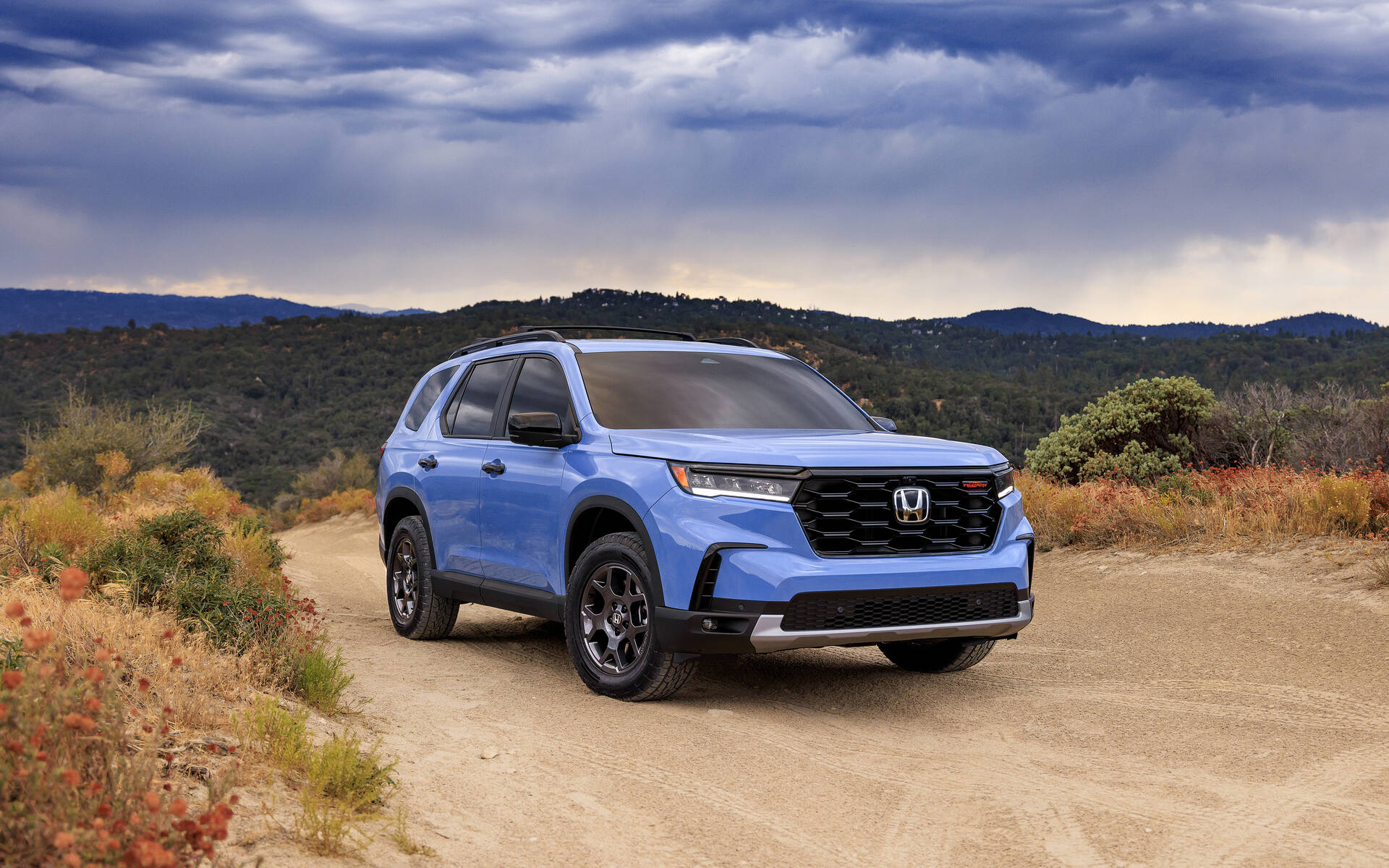
Honda’s LATCH system is well-executed in the Pilot. The anchors are clearly marked and easy to reach, even with thick seat cushions. Tether anchors are located high on the seatbacks, allowing for quick and secure installation.
The second-row bench and available captain’s chairs both provide wide, level seating surfaces, helping ensure a stable and properly angled install for most rear-facing car seats.
In addition to its space, the Pilot adds convenience with rear doors that open nearly 90 degrees—making it easier to lift and place a rear-facing car seat inside. The seat height is also well-balanced, reducing the need for excessive bending or lifting.
Other family-friendly features include tri-zone climate control, in-cabin PA system (CabinTalk), and rear entertainment systems in upper trims—great for keeping older kids entertained while younger ones ride rear-facing. USB ports and cupholders are also plentiful in the rear rows.
For families needing both space and function, the Honda Pilot delivers in spades. It’s versatile, reliable, and genuinely accommodating when it comes to rear-facing car seat installation—making daily routines and road trips less stressful for parents and more comfortable for everyone on board.
8. Chevrolet Traverse
The Chevrolet Traverse stands out in the midsize SUV segment with its remarkably spacious interior, making it an excellent option for families needing to install rear-facing car seats without compromising front-row legroom.
With nearly 41.5 inches of second-row legroom, the Traverse provides one of the largest rear passenger spaces in its class, allowing for bulky infant and convertible car seats to fit comfortably behind the front seats.
The Traverse’s rear seats are wide and flat, which facilitates secure and straightforward installation of rear-facing car seats. The LATCH anchors are well-marked and easy to reach, with tether anchors positioned high on the seatbacks for convenience.
This design ensures that parents can safely install seats without hassle, even when managing larger car seats with more complex harness systems.
Entry and exit are user-friendly as well. The rear doors open wide, and the seat height allows for easy lifting of children into the vehicle, minimizing strain on caregivers.
The cabin’s airy feel, combined with large windows and an optional panoramic sunroof, helps keep children comfortable and entertained during trips.

The Traverse also provides thoughtful family-friendly features, such as tri-zone climate control, multiple USB ports throughout the cabin, and built-in rear entertainment systems on higher trims. The ability to charge devices and keep children entertained is a welcome bonus on longer drives, reducing stress for parents.
An added benefit of the Traverse is its seating flexibility. With its standard three-row layout, the second row can be either a bench or captain’s chairs, both designed to accommodate rear-facing car seats without reducing front seat comfort.
The second-row captain’s chairs provide easier access to the third row without the need to remove a car seat, a practical feature for families juggling multiple passengers.
In sum, the Chevrolet Traverse combines space, convenience, and technology in a family-friendly package that handles rear-facing car seats with ease while preserving the comfort of front-row passengers.
9. Mazda CX-9
The Mazda CX-9 is a midsize SUV that blends sporty handling with a refined interior, offering families both style and functionality.
Despite its sleek exterior, the CX-9 surprises many with its ability to fit rear-facing car seats in the second row without forcing front-row passengers to compromise their legroom.
With about 39.8 inches of rear legroom, the CX-9 may not have the largest cabin in its class, but its interior design makes every inch count. The rear seats are contoured and supportive, providing a firm base for installing rear-facing car seats securely.
Many parents find that popular convertible and infant seats fit comfortably behind the front passenger seat without sliding it forward.
Mazda’s attention to detail extends to the LATCH system, which is clearly marked and easy to access. Tether anchors are positioned high on the rear seatbacks, simplifying installation and increasing security. The relatively flat seat bottoms further help maintain the proper angle and stability needed for rear-facing seats.
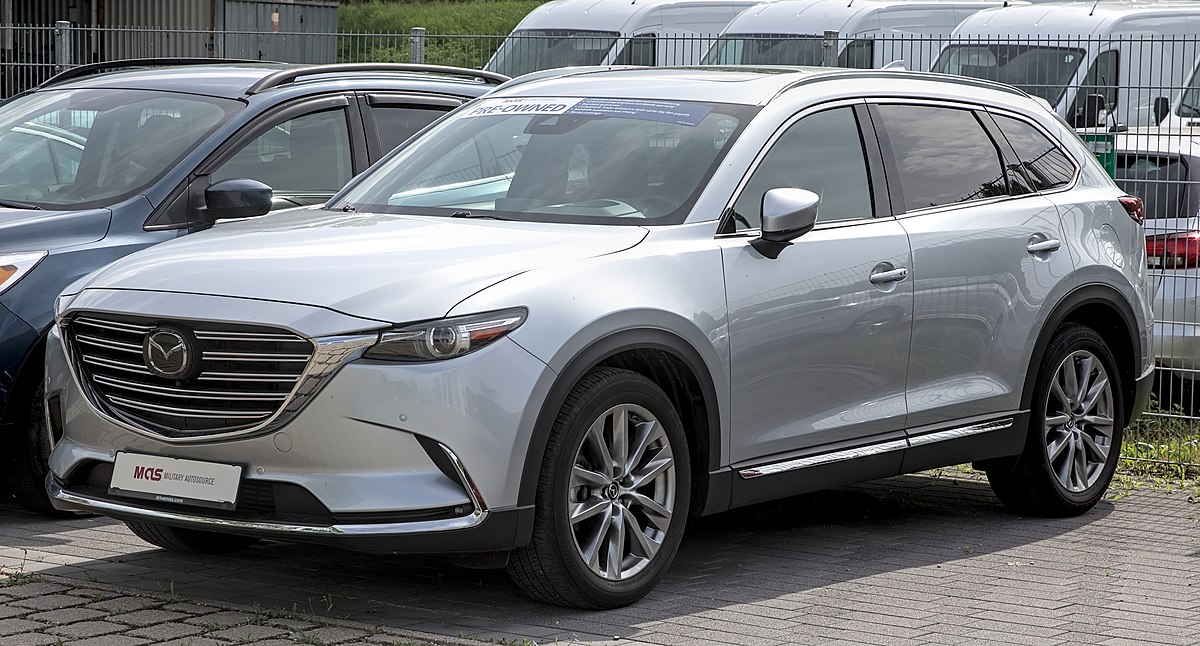
Door openings on the CX-9 are reasonably wide, and the rear seat height makes it convenient to lift children in and out. Additionally, Mazda includes rear air vents, USB ports, and ample cupholders to keep young passengers comfortable and entertained.
While the CX-9 offers a sportier drive than many family SUVs, it doesn’t sacrifice comfort or usability. The quiet cabin and smooth suspension help create a calm environment for infants and toddlers, reducing fussiness on long journeys.
Overall, the Mazda CX-9 strikes an appealing balance between style, performance, and family practicality. It’s a great option for parents who want a vehicle that comfortably fits rear-facing car seats without forcing front-seat adjustments—delivering a comfortable ride for all occupants.
10. Hyundai Palisade
The Hyundai Palisade has quickly risen to prominence as a family SUV that blends luxury, space, and thoughtful design.
One of its standout family-friendly features is the spacious second-row seating, which comfortably fits rear-facing car seats without forcing front passengers to adjust their seating.
With an impressive 41.3 inches of rear legroom, the Palisade accommodates large infant and convertible car seats behind both the driver and front passenger seats. This generous space means parents don’t have to sacrifice their own legroom or comfort when installing rear-facing seats—a common challenge in many SUVs.
Hyundai has designed the Palisade’s second-row bench to be wide and flat, providing an ideal base for secure and proper installation of car seats.
The LATCH anchors are clearly marked and easy to access, with tether anchors positioned on the seatbacks for straightforward usage. The seats also maintain a proper angle to support rear-facing car seats safely without the need for additional wedges or accessories.
Parents will appreciate the wide-opening rear doors and convenient step-in height, which make lifting and securing children easier. The Palisade also includes family-friendly amenities like rear climate control, multiple USB charging ports, and rear window sunshades, enhancing comfort and convenience for young passengers.
Beyond the practicality of fitting rear-facing car seats, the Palisade boasts a quiet and refined cabin, advanced safety features, and upscale materials, making it feel more luxurious than many competitors. It’s a perfect blend of function and style for families who don’t want to compromise on comfort or appearance.
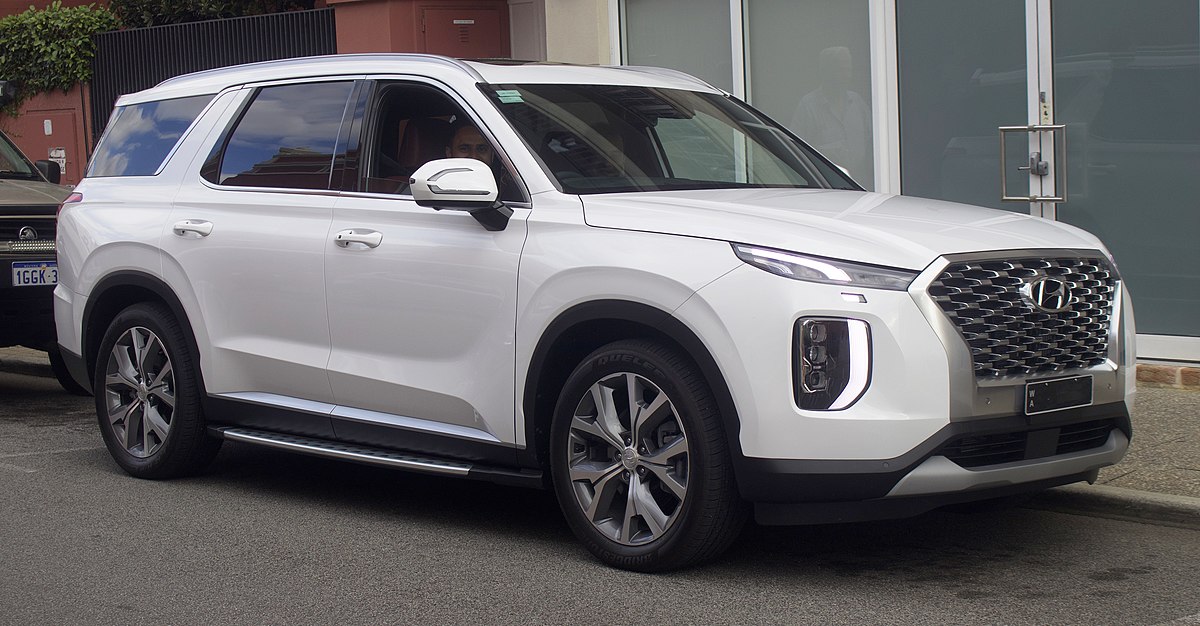
In summary, the Hyundai Palisade excels in creating a spacious, comfortable, and safe environment for families. Its ability to fit rear-facing car seats without moving front seats adds to its appeal as a versatile and accommodating family SUV.
Choosing a vehicle that fits rear-facing car seats without forcing front-row passengers to sacrifice their comfort is a crucial decision for many families.
Rear-facing seats, which are essential for infant and toddler safety, often require considerable space, and many cars fall short in providing it without compromising usability. However, as this list demonstrates, several vehicles on the market strike an impressive balance between safety, space, and comfort.
From compact SUVs like the Honda CR-V and Toyota RAV4 to larger three-row SUVs such as the Volkswagen Atlas and Kia Telluride, the variety of options ensures families can find a vehicle that meets their needs regardless of budget or style preferences.
Each of these models offers thoughtful interior designs that prioritize legroom, seat geometry, and accessibility, enabling rear-facing car seats to be installed securely and easily.
Key features that make these vehicles stand out include wide-opening rear doors, clearly marked and accessible LATCH systems, flat and supportive rear seats, and sufficient rear legroom.
These factors not only simplify installation but also enhance day-to-day usability—allowing parents to load and unload children with less hassle and maintain comfort for all passengers.
Moreover, many of these vehicles go beyond space considerations by offering family-friendly amenities such as rear climate controls, multiple USB ports, and advanced safety technology. These additions make traveling with young children more pleasant and less stressful.
It’s also worth noting the importance of choosing the right car seat in tandem with the vehicle. While the cars listed provide ample space, car seat models vary widely in size and shape. Families should always verify fitment by testing their preferred car seats before finalizing a purchase.
In conclusion, the right vehicle can dramatically improve the experience of transporting young children safely and comfortably. The ten vehicles highlighted here prove that families don’t have to compromise on front-row comfort to accommodate rear-facing car seats.
Instead, they can choose from a diverse array of cars designed to make child safety and adult convenience coexist effortlessly.
As families grow and evolve, having a vehicle that adapts to those changes without added stress is invaluable.
Whether it’s daily school runs or long road trips, these cars ensure every journey starts with peace of mind, knowing your child is secure and everyone has the space they need to ride comfortably.
Also Read: 10 Cars With the Easiest Child Seat Anchor Access

